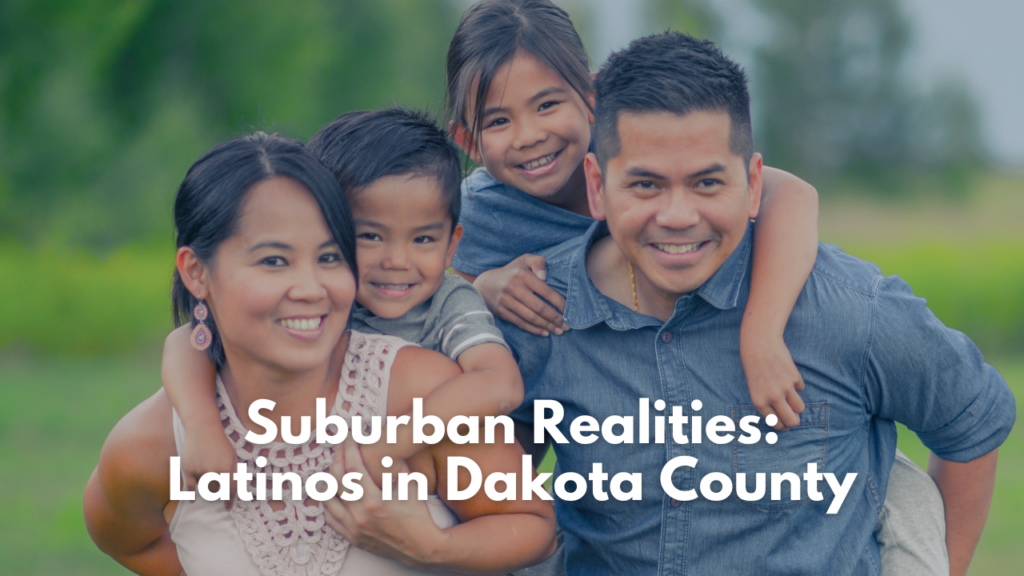
As you drive through the highly visible Latino presence along Concord Street on the West Side of St. Paul, you barely notice that in a matter of minutes you have slipped into Dakota County. It is difficult to believe that the border between the West Side neighborhood of the city of St. Paul and the city of West St. Paul in Dakota County is the beginning of a significant barrier to the Latinos who cross it so frequently. Even people who live on one side or the other of that border are confused about the differences in being a resident of Dakota County as opposed to Ramsey County. Yet within a matter of blocks, there are no more Spanish language signs, no more Latino frescoes decorating the sides of buildings. And in a few miles the landscape becomes decidedly suburban, with fewer houses, more drive-in facilities and certainly no Spanish language signs, no visible Latino presence. It is difficult to imagine that there are over 10,000 Latinos—recently arrived migrant workers as well as middle class professionals—living on the “other side,” the southern side of the Dakota/ Ramsey County border.
HACER conducted a research project between April and December of 1998 to learn about the experiences of the sizable numbers of Latinos who live in Dakota County. This report presents a picture of a diverse group of people who share a common language, culture, and sometimes national origin. HACER introduces the Latinos who live and work in this large county, but who frequently turn to the West Side of St. Paul for cultural and spiritual support.
